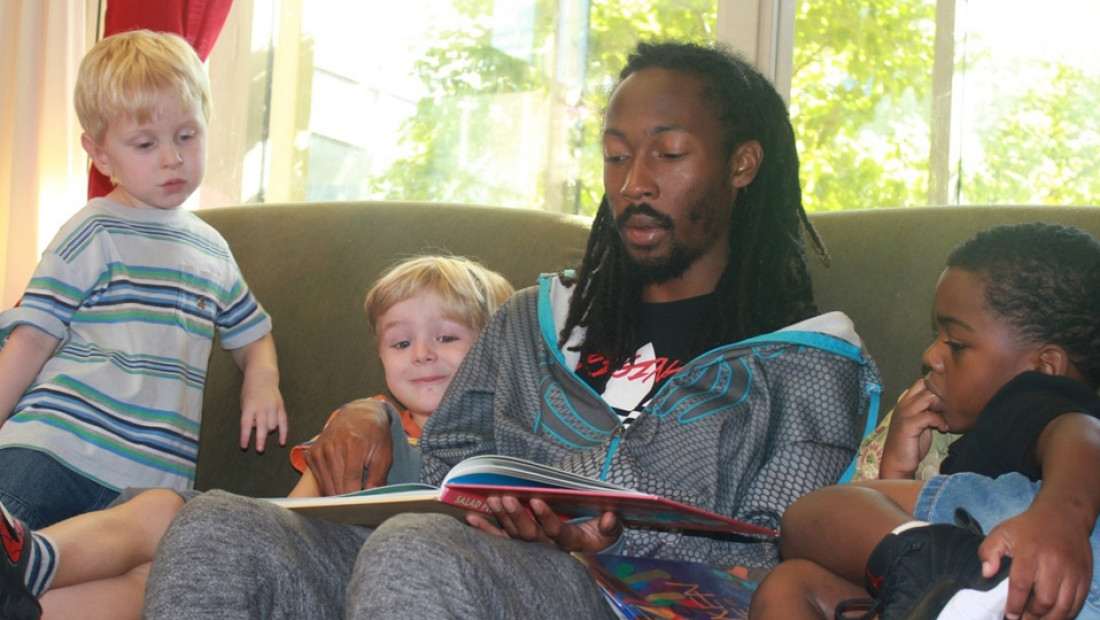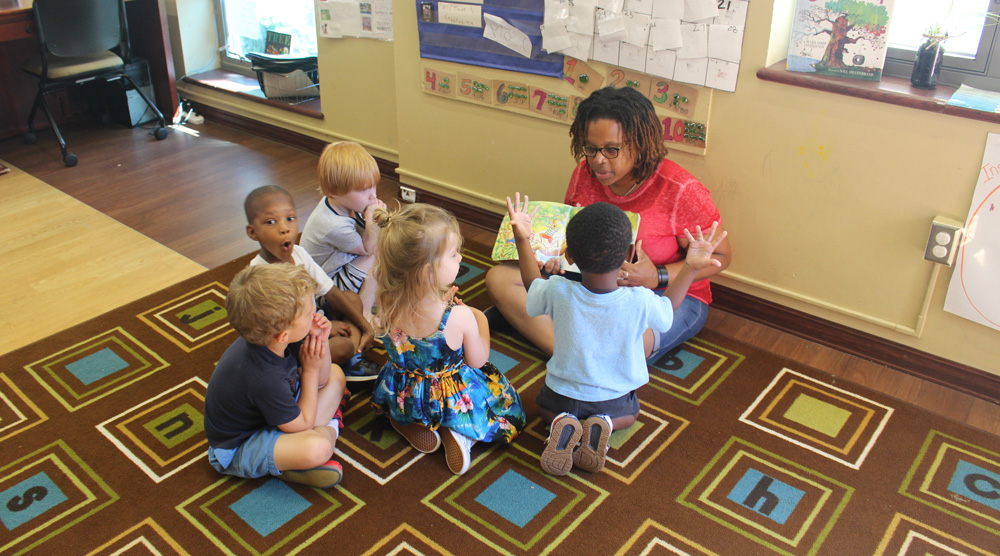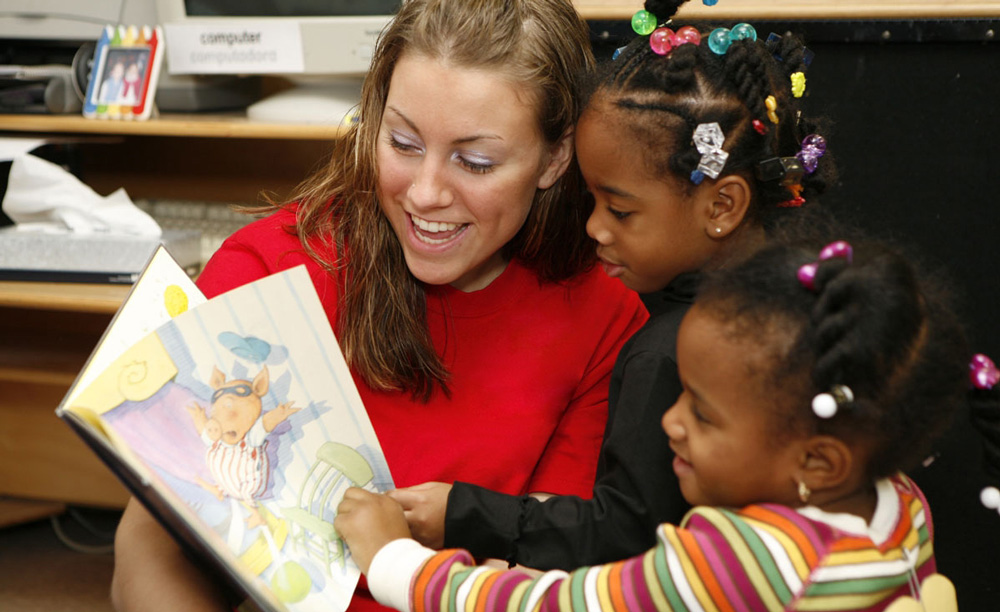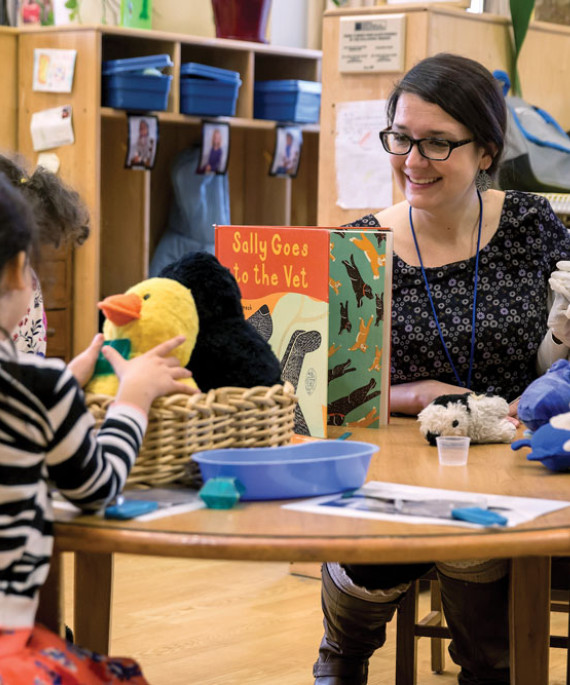
A child is nestled in your lap, and the picture book is opened wide. Maybe she’s a quiet observer while you read. Or maybe he points out every detail on the page.
Whether your child likes to listen or likes to talk, how you engage them is important.
In a recent study, College of Education and Human Ecology researchers found that teachers may be asking too many easy questions, or no questions at all, while reading to their preschoolers. Naturally, this leads to the question: What should families ask their preschoolers to help get them thinking as they read?
“Book reading and the conversations embedded within book reading are really good ways to provide lots of language and stimulation to kids, which in turn strengthens the part of the brain that is responsible for language,” said EHE Distinguished Professor Laura Justice, the study’s author, in the podcast Positively Dad.
It can be hard for families to know where to start when having these conversations during reading time, so the college’s experts offer the following advice.
“It's most important that children are asked questions that they can expand upon – questions that ask them to describe something,” said Anneliese Johnson, principal of the college’s A. Sophie Rogers School for Early Learning.
Families and teachers should be asking questions such as “What's more?” “How else?” or “Why do you think that?” rather than “Is that blue?” or “Who’s smaller?”
“We want to ask questions that make kids infer things,” Justice said. “There’s good evidence that suggests that is good for kids’ development.”
“What happens next” or “Why do you think the character is doing that” are types of inference questions to ask.

Try not to get too caught up in the way you ask questions.
“The best way to think about good questioning or good conversation is that it's authentic and honest,” Justice said in the podcast.
“A good rule when you're reading with just one or two children is really to follow their lead. It's more important to talk with your child about the book than it is to finish the book in one sitting,” Johnson said.
Keep in mind where your child is in his or her reading skills. It’s easy to recognize when a child is struggling with questions that are too complex.
A three-year-old may not yet be developmentally ready to say what will happen next. “That's a complex executive thought process – to predict something in the future,” Johnson said.
So if they can't answer “What happens next,” don’t worry. Change the question to “How do you think he will get out of that box?”
“You're focusing the child's thinking and giving them a more attainable question. You’re still asking them an open-ended question, rather than just moving on in the book or not supporting that thinking skill,” Johnson said.
If necessary, continue to ask simpler questions until the child can respond. Then the next time you read to your child, you’ll know at which level to start asking questions.
Teachers also use a tactic called “serve and return.” A child asks a question or makes a statement; the adult expands upon it, offering more information and more words that help expand the child’s vocabulary and narrative skills. Then, the adult offers the conversation back to the child. The goal of serve and return interactions is to keep the back-and-forth conversation going as long as possible.
The hardest questions for children to answer are ones for which they have little context. Questioning about space or dinosaurs might be difficult because children have never been around them. An Ohio child’s concepts of the ocean and snow might be much different than those of a child living in Florida.

When reading books that don’t have many pictures, watch for signs that the book is too challenging. If the child asks lots of questions or makes comments about it, he likes it. If she’s disengaged or starts playing, you’ll know that the book is too advanced.
Funny books can be very engaging, Johnson said, because they give children the rewarding experience of laughing with families or their classmates. She likes books by Mo Willems author of Don’t Let the Pigeon Drive the Bus! or The Pigeon Finds a Hot Dog!
Children also love books with elaborate illustrations that they can search for hidden objects. The drawings give families and teachers a built-in way to ask questions. Another category of book younger children especially love: repetitive and rhyming books.
Professor Justice also addresses how to support a child who is less willing to talk. “Something that can help is storybooks with manipulative features, like flaps you can lift,” she said, or books that make sounds.
The best way to practice reading and asking your children compelling questions is to keep reading.
“First and foremost, always incorporate reading into the daily life of your child. And the easy way to do that is bedtime, because it's also a relaxing activity where you can connect emotionally. It shows the child that reading is valued in the home,” Johnson said.
Justice reinforced the importance of reading to children, especially at a younger age.
“Birth to five is the most important period of brain development,” she said. “They’re building connections throughout their brain, and those connection pathways are going to serve them” for the rest of their lives.
“Sitting down and reading a book, one on one, with a shared focus for 10-20 minutes a day is helping lay those pathways,” Justice said. “It is not a trivial activity. It's actually really important.”
Reading to the child in your life is a privilege, and soon they’ll be reading on their own. Family life can be hectic, and reading sometimes slides off the schedule.
“But if you're enjoying it, the child will enjoy it, so try not to make it stressful, but an enjoyable part of your daily routine,” Johnson said.




